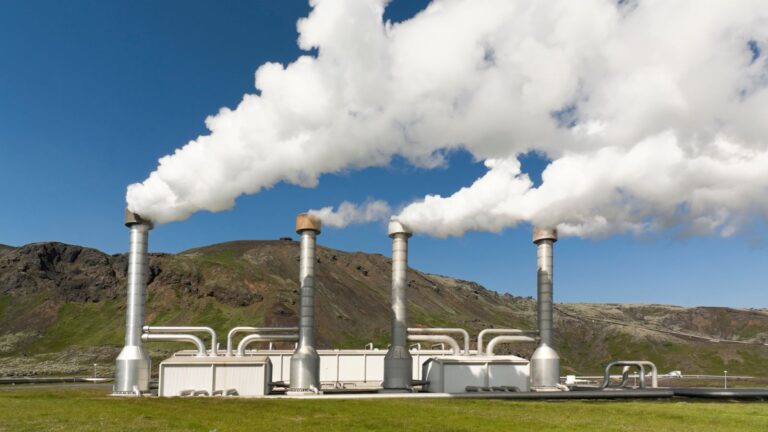China Halts U.S. LNG Imports Amid Tariff War
China has ceased importing liquefied natural gas from the United States since early February, as the ongoing tariff war impacts energy trade.
Current Access Level “I” – ID Only: CUID holders, alumni, and approved guests only
Fact Sheet by , , • February 11, 2021
In order to decarbonize the US economy at a reasonable cost and on an accelerated timeline, the country needs to both grow and rapidly decarbonize the power sector. This process will require many new technologies that support an affordable, equitable, and achievable transition. Expanding the clean-electricity focus beyond variable renewable technologies to include other types of zero-carbon power—as well as investing in the transmission and distribution grid that delivers this power to communities around the country—will allow the US to build a reliable, secure, and sustainable zero-carbon power system.
The power sector is currently responsible for nearly a third (32 percent) of total emissions from the US energy sector. Recent emissions reductions in the power sector have been driven primarily by fuel-switching from coal to natural gas and renewables. From 1990 to 2019, total power generation in the US increased by 36 percent.[1] Over the same period, coal-fired power generation fell from 52 percent (1,594 terawatt hours [TWh]) of total power generation to 23 percent (966 TWh), while natural gas’s share of generation increased from 12 percent to 38 percent (373 TWh to 1,562 TWh), and renewables grew from 12 percent to 17 percent (357 TWh to 720 TWh). Due in large part to rapid shifts in the power sector, its annual carbon dioxide emissions peaked in 2007 in the United States and have since declined by 1.3 percent per year on average.[2] But emissions are still falling too slowly to meet the Paris Agreement’s central aim to keep global temperature rise this century to “well below 2°C” above pre-industrial levels.
There is strong agreement in the literature[3] that if the US is to achieve deep and economywide emissions reductions, the power sector should: 1) reduce emissions to nearly zero and 2) grow to support the electrification of other sectors such as transportation, space heating, and some industrial applications. The literature is similarly clear that the most affordable pathways to a reliable, zero-carbon power sector include a mix of technologies across three broad pillars:
Analysis has shown[4] that removing any of these three pillars leads to escalated costs and increased risk of implementation failure. For example, pathways that singularly pursue a goal of achieving 100 percent variable renewables (e.g., wind and solar) are likely to be materially more costly than diversified portfolios that also include firm, low-carbon generation (e.g., hydro, nuclear, natural gas with CCUS) and energy storage.
Policy makers seeking paths to accelerate the transition to zero-carbon electricity should emphasize the importance of all three technology pillars when choosing decarbonization targets and designing strategies to achieve them. Furthermore, policy makers can take the following concrete actions to support a rapid and affordable transition to zero-carbon power:
Notes
[1] Energy Information Administration, “Electricity explained: Electricity generation, capacity, and sales in the United States,” March 19, 2020, https://www.eia.gov/energyexplained/electricity/electricity-in-the-us-generation-capacity-and-sales.php.
[2] Energy Information Administration, “U.S. Energy-Related Carbon Dioxide Emissions, 2019,” September 30, 2020, https://www.eia.gov/environment/emissions/carbon/, https://www.iea.org/data-and-statistics?country=USA&fuel=Energy%20consumption&indicator=TFCbySource.
[3] J. Jenkins and S. Thernstrom, “Deep Decarbonization of the Electric Power Sector: Insights from Recent Literature,” March 2017, https://www.innovationreform.org/wp-content/uploads/2018/02/EIRP-Deep-Decarb-Lit-Review-Jenkins-Thernstrom-March-2017.pdf.
[4] For example, [1] S. Das, E. Hittinger, and E. Williams, “Learning is not enough: Diminishing marginal revenues and increasing abatement costs of wind and solar,” Renewable Energy 156 (2020) 634e644; [2] N. Sepulveda, J.D. Jenkins, R. Lester, and F. de Sisternes, “The role of firm low-carbon electricity resources in deep decarbonization of electric power generation,” Joule 2, no. 11 (2018), doi:10.1016/j.joule.2018.08.006.

New government documents seek to align the climate disclosures of Chinese companies with national priorities and global best practices. Edmund Downie (Princeton U) and Erica Downs (Columbia U) write for Shuang Tan.

Full report
Fact Sheet by , , • February 11, 2021